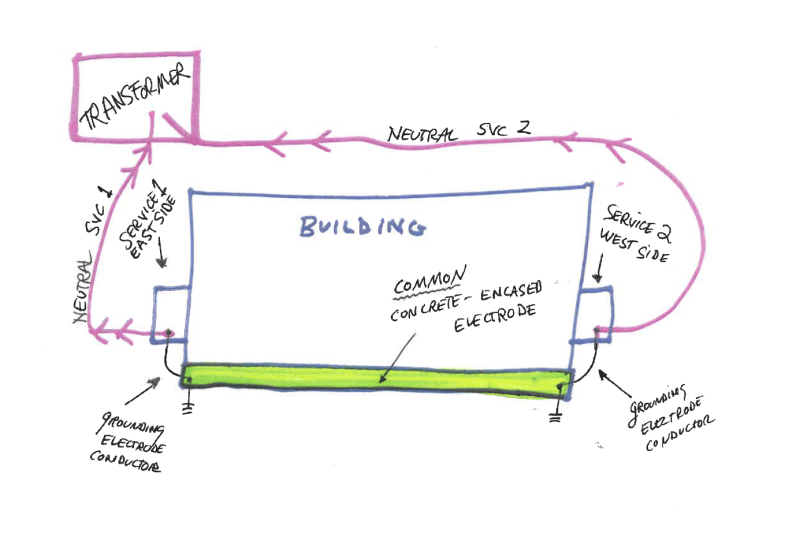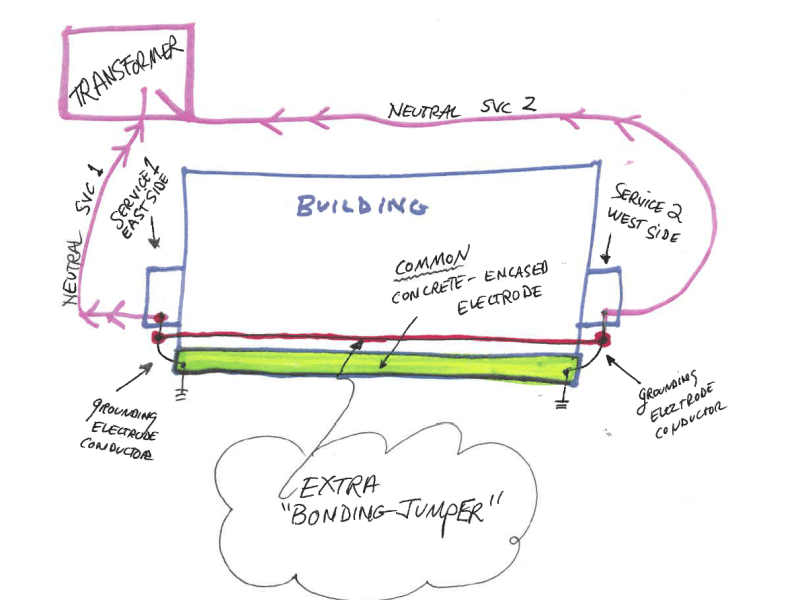VladChiefns830
Specifier/Regulator
Hello,
I have an engineer giving me grief, so I decided to redraw the design and ask the people here. I'm using 2017 NEC.
Picture a large building with 2 services at opposite ends of the building. I do realize that the services are not grouped at the same location, but there will be permanent placards per 230.2(E).
See picture.
Would we all agree that the services are connected to a COMMON GROUNDING ELECTRODE and that the services clearly meet NEC 250.58? I think most everyone here would agree...
??

I have an engineer giving me grief, so I decided to redraw the design and ask the people here. I'm using 2017 NEC.
Picture a large building with 2 services at opposite ends of the building. I do realize that the services are not grouped at the same location, but there will be permanent placards per 230.2(E).
See picture.
Would we all agree that the services are connected to a COMMON GROUNDING ELECTRODE and that the services clearly meet NEC 250.58? I think most everyone here would agree...
??


